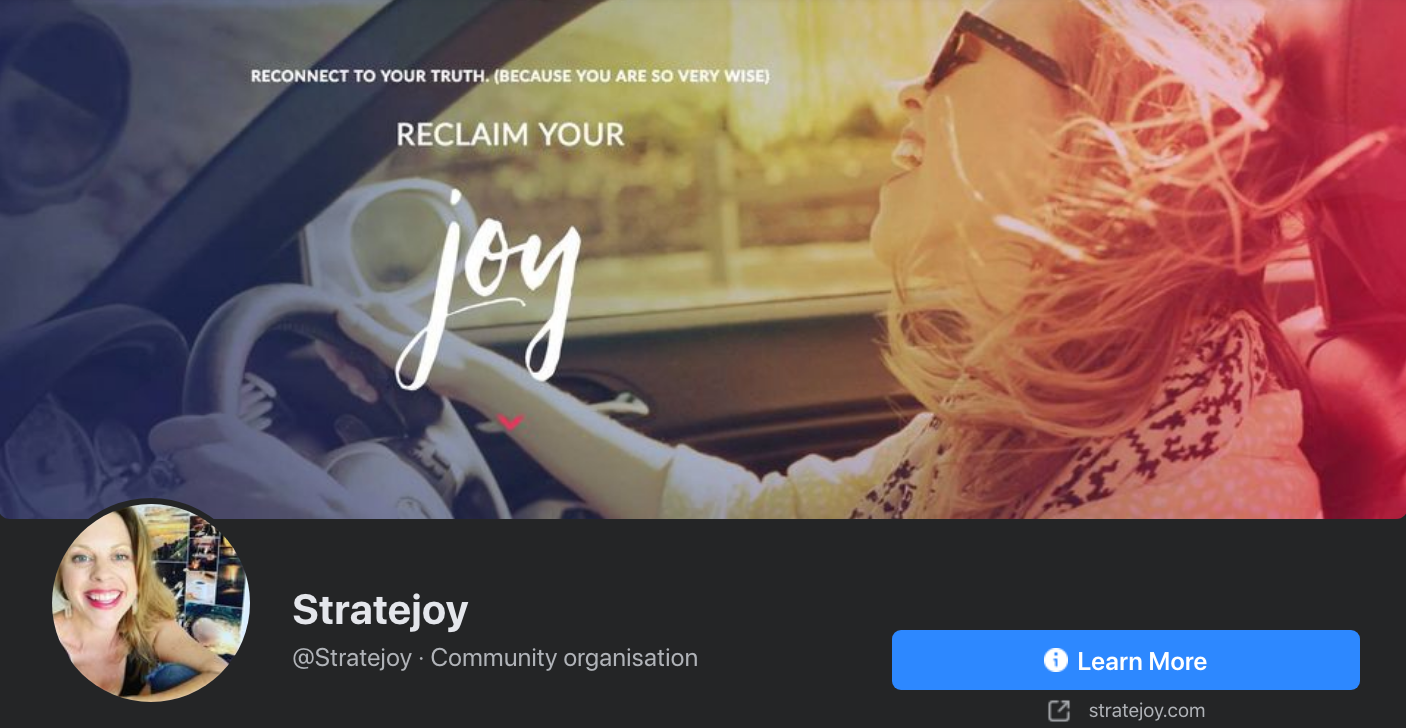Social media is not a media. The key is to listen, engage, and build relationships.
How we use social media has changed a lot over the last several years. Now, people use social media not only for entertaining themselves, learning, and networking but also for promoting their businesses. Marketing on social networks has become more than just paid ads. Social media marketing for business coaches is a powerful and effective tool for attracting clients. With 3.78 billion daily active social media users, social media platforms provide multiple opportunities to reach new clients and grow your coaching business.
The main problem for many aspiring coaches is a haphazard approach to promotion on social media. To get great results, you need to structure your work on social networks. In this blog post, you’ll learn why your coaching business needs social media and how to use social networks effectively to promote your coaching practice, establish yourself as a thought leader, and stay relevant in a saturated coaching market. Read on.
Why you need social media as a coach
By maximizing the power of social media, you would no longer have to blindly wonder how to market your coaching business online, as you’ll grow an engaged audience of ideal clients, boost your professional brand, and differentiate yourself from other coaches in your niche faster than with any other marketing tool. Smart use of social media will allow you to:
- Reach a broader client base. Social media feeds not only help people stay up to date with news and events but provide them with access to businesses and their services.
- Create and maintain your brand. Your brand makes you stand out from the crowd. Social media is the perfect tool for building and developing your brand, as it gives you the potential to be seen and recognized by lots of people.
- Understand your audience better. Using social media, you can learn what your clients need and want, what type and format of content they prefer, what pain points and challenges they face, etc. When you know your audience well, you can tailor your message and content to their needs and generate high-quality leads for your coaching business.
- Increase customer loyalty. Nowadays, people expect to find you on social media. By allowing your prospects to connect with your business online, you provide them with greater convenience and enhance brand awareness and loyalty.
- Build better relationships with clients. Clients value personal communication. Social media is a perfect tool for that. Communicating with your target audience enables you to build strong relationships with your clients and grow your business.
How to market your coaching business online?
Here are some best practices for marketing your coaching business online:
Networking events
Participating in group events and networking with like-minded specialists can help you expand your reach, make yourself noticeable, and build valuable connections.
Free offers
You can offer your target client something valuable for free, such as a template, checklist, ebook, or any other source that addresses your client’s concern. You can include the offer in your emails and increase the chance of converting a new prospect into a client.
Facebook groups
In Facebook groups, it is easier to find your ideal client. You simply need to join the right groups that align with your services and post valuable content that will catch your target clients’ attention.
SEO
Ensuring your website is optimized for effective search results will increase the likelihood that your target clients can easily find you. For this, prioritize picking up the proper keywords that your target clients would use to search for similar services and optimize your website for these keywords.
Guest posting
When starting your blog, you might have a limited number of readers. So this is high time to reach trusted third-party blogs that match your target clients. This way, you ensure quality backlinks to your website.
Affiliate marketing
Cooperating with a program compatible with your business can provide you with additional revenue and more clients. Make sure that the affiliate program you promote is in line with your brand’s values.
Paid advertising
If you’re not a beginner and developed your coaching business to a certain extent, you can benefit from investing in paid ads. This is a great way to attract the right audience to your coaching services in the shortest possible time.
How to market your coaching business on social media?
To get the maximum advantage from social media for your coaching business, stick to this eight-step scheme.
Step 1. Set clear goals
The first step you should take on your way to social media marketing success is to set clear, measurable goals and identify what you want to achieve by using social media. Without sharply defined goals, you may end up leaping in the dark and wasting your time. Pick a goal and focus your effort on it. Examples of goals are getting more coaching session bookings, bringing more traffic to your website, gaining more followers, building brand awareness, and strengthening your brand reputation.
Ensure you set metrics for your goals to evaluate performance. Each of the social media platforms we’re going to talk about has its own metrics to track and offers basic tools for monitoring social media performance (Facebook Insights, Twitter Analytics, LinkedIn Analytics, Instagram Insights, YouTube Analytics). For example, Facebook offers the following metrics:
- Impressions to track how many times your published content was seen, which works for both free and paid content
- Reach to track the total number of people who have seen your content
- Engagement rate to track the percentage of viewers who have interacted with your content (liked, shared, or commented)
- Followers growth to track how many new followers you got in a specific time period
- Link clicks to track how many times a link in your post leading to your website, landing page, or somewhere else was clicked
- Click-through rate to track post engagement, which is measured by dividing the number of link clicks by the reach and multiplying the result by 100
- Share of voice to track how many people have mentioned your brand on social media
- And others
Make it clear for yourself how tracking these metrics can help you reach specific business goals.
Step 2. Define your target audience
“How do I market my coaching business” is a question frequently asked by those who haven’t defined neither platforms nor to whom exactly they are going to market their services to. By serving everyone, you’ll end up serving no one. You should have a clear understanding of your target clients — who they are, how old they are, what problems they have, what they want to achieve, what they value. For this, you need a well-established ideal coaching client profile.
There are two aspects based on which you can describe your target clients — demographics and psychographics. Demographic characteristics include gender, age, marital status, education, parental status, location, ethnicity, occupation, industry, company size, and income.
Psychographic characteristics describe your ideal client’s personality traits, goals, attitudes, interests, pain points, values, beliefs, fears, concerns, challenges, risks, objections, decision-making factors, etc.
Both demographic and psychographic metrics can be used to launch targeted advertising campaigns. Also, psychographic characteristics are crucial for creating and prioritizing content that aligns with your target prospects’ needs and interests.
It’s crucial to know your target audience well to understand what drives them to buy your services and how you can convince them you’re the right coach for them.
Get a complete step-by-step guide to creating your ideal coaching client profile to know how to tailor your marketing messages to your clients’ needs.
Step 3. Choose the proper platform
With so many social media networks available, it may be quite challenging to make the right choice. We recommend you make a decision based on two aspects:
- Where you target audience is likely to hang out
- What networks your competitors use to promote their businesses
The most common social media networks for promoting businesses are Facebook, LinkedIn, YouTube, Instagram, and Twitter. Look at each platform’s largest age demographic and gender ratio to see which platform fits your business goals.
According to Statista, Facebook is the most popular social media network, with almost 2,8 billion monthly active users as of April 2021. That’s a lot of potential eyeballs on your coaching business. No other platform has managed to reach this many active users per month.
Facebook has long ceased to be a network for leaving comments under your friends’ photos. Now it’s a powerful place for audiences to connect with businesses and their services. On Facebook, you can create thematic groups or become a member of existing groups to strengthen your brand. Also, you can launch ads to attract more clients.

There are 756 million LinkedIn users in 200 countries and regions globally.
LinkedIn is known as a network for building business connections, and it can be another place to attract coaching clients. You can join a professional group on LinkedIn where your target clients are members and become an active contributor by sharing quality content. This will allow people to get to know you as an expert.

YouTube
If earlier YouTube was associated with music, now it’s a powerful (and the second most popular) platform for promoting and scaling businesses. With almost 2.3 billion monthly active users as of May 2021, YouTube lets you reach a wide audience through concise videos that communicate a valuable message. Besides, YouTube is an effective search engine, so ensure you include keywords in your video titles so people can find your content.

There’s no doubt Instagram is one of the most popular social media networks today. As of January 2021, there were over 1 billion monthly active Instagram users. People check their Instagram feeds and watch Stories on a daily basis. Because of this, you have a good chance to meet your ideal clients there. By sharing valuable content in various formats and launching ads on Instagram, you can effectively promote your coaching services.

Twitter has 353 million monthly active users as of April 2021, which opens up opportunities to grow your coaching business. With no borders and viral retweets, Twitter is the ideal social network for spreading news, discussing opinions, and finding clients. Besides, integrating your Twitter account with your website increases brand awareness and client loyalty.

Besides these social media platforms, you can join various thematic social media platforms like TechCrunch if you’re a startup business coach, LawLink if you’re a legal coach, or Elpha if you’re a female career coach.
Step 4. Fill in your profile
Completing your social media profile is an important step in building your social media presence for several reasons.
Your social media profile…
- Is a place for people to get to know you as an expert
- Helps you get found
- Allows you to gain credibility
- Makes you stand out from the competition
- Helps you engage with potential clients
There are several elements of a successful social media profile:
Your display name
It’s best to use your real name as your display name. However, you might also use a pseudonym if it’s how you’re known in the industry or it’s the name of your website. Ensure your display name is the same across all your social media profiles.
Below is an example of what a coach’s social media profile with a pseudonym looks like.



Your bio
Your profile bio is usually a one-sentence description of your business and services. Think of it as the perfect place to communicate your unique selling proposition and include keywords related to the services you deliver.
Want to know how to craft a catchy and effective unique selling proposition? Read our seven-step guide to creating a winning unique selling proposition for coaches.
Your bio may be longer than one sentence if the social media network allows. For example, on LinkedIn, you can write a description of up to 2,000 characters. However, we recommend you work out a short bio that will fit and be consistent across all of your chosen social media networks.
Your profile photo
The choice is yours whether to use your photo or your logo. If you choose to use a photo, ensure it’s a high-quality close-up showing your face and eyes so it looks good on any device. We also recommend you stick with the same photo across social networks. This will make it easy for clients to recognize you on various platforms.
Your background image
All social networks have different profile requirements, but most platforms offer some way to add a larger image behind your profile photo. Some coaches choose to use the default background image (for example, on LinkedIn or Twitter), but it’s not a good idea. A customized background image will give personality to your brand.
When choosing a background image, ensure it doesn’t distract attention from your profile picture. On some platforms (such as Facebook), you can even use a video, which is a more engaging way to connect with your prospects than an image.
Links
Another important element to include in your social media profile is a link to your website or other social networks so your prospects can learn more about your services and buy them if they’re ready to make a purchase.
You can also share a link to your booking page for people to immediately book a coaching session without leaving your social media business coach profile. This can be done by integrating a booking page in your social media profile, which is convenient and time-saving. The ExpertBox booking page allows your clients to book appointments with you based on your availability and allows you to avoid back-and-forth communication.
Call to action
Without a doubt, a clear and catchy bio with a nice profile photo is essential. But an engaging social media profile has to be purpose-oriented. What marketing goals do you want to achieve through social media?
A compelling call to action (CTA) invites potential clients to engage with your brand. For instance, you can invite people to visit your website, leave a comment, share valuable content, book a session, sign up for a trial, etc. Ensure your CTA is aligned with your marketing objectives.
Filling out your social media profiles does take time and effort. However, a complete profile can be a significant factor in attracting prospects, providing them with the information they’re looking for, and turning them into clients.
Custom URL
Custom URLs for your social media profiles add credibility to your social media presence and let people immediately identify with your brand. A unique URL makes it easy for potential clients to connect with you and is easy to share. No one can remember a long string of random characters and numbers.
Therefore, it’s a good idea to make your brand name part of every social media profile URL. If that option is unavailable, opt for something relevant to your services. However, you should remember that you won’t be able to change your custom URL after a while on some networks. So choose wisely.
Step 5. Manage privacy settings
Once you’ve filled out your profile, the next thing you will need to check is your privacy settings. These will vary from network to network. The main thing you want to ensure is that the information you’d like to be public is publicly available. If your profile is fully business-related, you’ll want all of your information to be public. If it’s a combination of a personal and a business profile, you may want to hide some things from certain audiences.
Step 6. Create powerful content
Effective content lets you build long-term relationships with your target prospects, grow your audience, and establish credibility, ultimately resulting in increased revenue for your coaching business.
When it comes to sharing content, we recommend you stick to the one-in-seven rule: share six pieces of content that are relevant to your audience for every one purely promotional post. Relevant content can be blog posts, news articles related to your coaching business, etc.
Such an approach avoids spamming your potential clients with endless promo materials but builds trustworthy relationships with them by becoming a reliable source of up-to-date information about their interests and needs.
By sharing high-impact content, you earn trust as an expert. Mix various formats and types of content that are typical for the social media platform depending on the information you want to share — stories, posts, videos, live streams, infographics, etc.
Follow these 11 tips for creating content that gets the attention of your target audience and inspires engagement:
- Put your audience first
- Speak your target audience’s language
- Write in your brand voice
- Craft compelling headlines
- Use images and videos
- Write well-structured, easy-to-read posts
- Add a call to action
- Use related hashtags
- Post regularly
- Keep you posts personal
- Choose the best days and times to post

Step 7. Engage with your prospects
An important benefit of social media business coach marketing is that it allows you to communicate directly with your potential clients and build stable relationships that can later lead clients to pay for your services. When your prospects interact with your content (like, comment, share), you get a response. That’s how trust and loyalty are built.
Follow the tips below to effectively communicate with your prospects:
- Don’t try to sell your services from the first message
Trust between you and your prospects is the key to a successful relationship, so don’t try to sell your coaching services from the first message. If someone asks for expert advice, provide it. Ask clarifying questions to better understand clients’ needs.
- Communicate informally, but avoid familiarity
Social media is a place for informal communication. Try to avoid a formal tone and clichés. But don’t go overboard with familiarity. Try to find a communication style that is appropriate for your potential clients.
- Don’t be shy to join the discussion
Even if you see that someone has already answered a user’s question in the comments, don’t be shy to join the conversation. After all, you are the expert on the subject, aren’t you?
Step 8. Run ads
If you want to know how to promote your coaching business not only by organic means of social media, which is limited in its reach, pay attention to paid campaigns. Each of the social media networks we’ve mentioned above allows you to launch them. The primary benefit of social media advertising is that it allows you to reach the appropriate audience, i.e. people who are most likely to be interested in and pay for your coaching services.
You can run ads yourself or hire a targetologist, which is less time-consuming and can provide better results than trying to set up social media ads independently. Besides, the algorithms of social media ad platforms are constantly changing, which makes it difficult to stay up to date with them. Hiring a targeting expert will cost you money, but it’s an investment you won’t regret.
Running ads across various social media networks will allow you to significantly grow your social following and increase your online visibility while giving you enough time to manage other aspects of your coaching business.

Wrapping up
When used properly, social media can be a powerful lead generation source for your coaching business. An effective social media presence is just one step in building and developing your online coaching business.
Want to know what other steps you should take to start a profitable coaching business online, get new clients, and earn your desired revenue? Read our ultimate guide to starting a prosperous online coaching business in 2021
FAQ
-
To get the maximum advantage from social media for your coaching business, stick to this eight-step scheme.
- Set clear goals
- Define your target audience
- Choose the proper platform
- Fill in your profile
- Manage privacy settings
- Create powerful content
- Engage with your prospects
- Run ads
-
Smart use of social media will allow you to:
- Reach a broader client base. Social media feeds not only help people stay up to date with news and events but provide them with access to businesses and their services.
- Create and maintain your brand. Your brand makes you stand out from the crowd. Social media is the perfect tool for building and developing your brand, as it gives you the potential to be seen and recognized by lots of people.
- Understand your audience better. Using social media, you can learn what your clients need and want, what type and format of content they prefer, what pain points and challenges they face, etc. When you know your audience well, you can tailor your message and content to their needs and generate high-quality leads for your coaching business.
- Increase customer loyalty. Nowadays, people expect to find you on social media. By allowing your prospects to connect with your business online, you provide them with greater convenience and enhance brand awareness and loyalty.
- Build better relationships with clients. Clients value personal communication. Social media is a perfect tool for that. Communicating with your target audience enables you to build strong relationships with your clients and grow your business.




